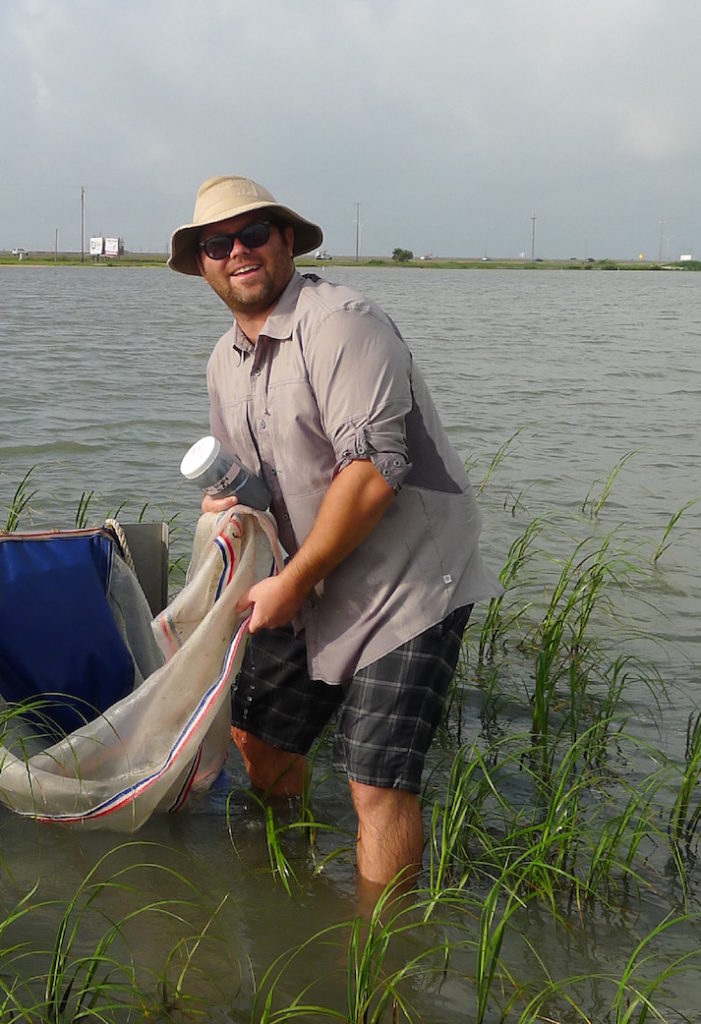
Ph.D. Candidate, Texas A&M-Corpus Christie
Conference Travel Grant Type 2 (Benthic Ecology Meeting)
Monitoring the functional recovery of a restored Spartina alterniflora salt marsh
“Coastal wetlands in Gulf of Mexico provide a wide array of ecosystem functions and promote valuable ecosystem services such as storm surge protection, fisheries support and carbon sequestration. The historic degradation of Spartina alterniflora salt marsh habitat in Nueces Bay, TX prompted the restoration of ~150 acres of salt marsh habitat through the construction of protective berms and planting terraces in 2010. Nekton communities inhabiting the restored salt marsh and an adjacent natural counterpart were each sampled at 4 sites seasonally in 2014 and 2015 with a modified epibenthic sled to evaluate the proficiency of the restored salt marsh in supporting ecosystem functions and providing nursery habitat for economically important fish species. Both salt marsh habitats were found to support nekton communities primarily composed of grass shrimp (Palaemonetes spp.), brown shrimp (Farfantepenaeus aztecus), blue crab (Callinectes sapidus) and a variety of fish species – with typical densities from 35 to 45 n•m-2. Restored and natural salt marsh habitats supported similar nekton densities and community assemblages during all sampling periods except in August of 2014; where the restored salt marsh was found to support significantly greater nekton densities than the natural salt marsh (ANOVA: F = 6.9, p = 0.015). The reduced nekton density was primarily attributable to a seagrass wrack inundation event that impacted natural salt marsh sites significantly while the protective berms mitigated this disturbance in the restored salt marsh. Stable isotope analysis of source and consumer tissue revealed similar δ13C and δ15N in conspecific nekton between natural and restored salt marsh habitats, indicating similar organic matter sources supporting secondary production and a rapid recovery of trophic structure within 4 years of habitat construction. The results of this study show the construction Nueces Bay salt marsh was successful in restoring community trophic structure and providing nursery habitat for economically important fisheries species. Furthermore, the physical structure of the restored salt marsh appears to have provided protection from a significant disturbance event; highlighting the potential of these projects to incorporate design features that enhance their resilience to disturbances that may impact natural habitats. ”
